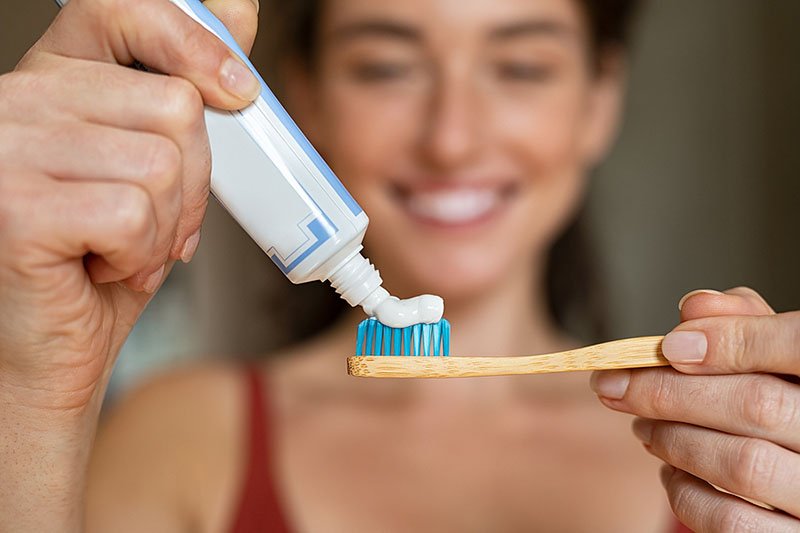
We all need toothpaste, but there are many different kinds to choose from. The variety might seem overwhelming, but we’re here to go through the differences & explain the benefits of each.
What Is Toothpaste?
Generally, toothpastes are gels, pastes or powders that help remove plaque from teeth. They are made of small abrasive particles (like silicates & salts), fluoride, humectants (used to keep the paste moist), thickeners (like natural gums, cellulose or seaweed), detergents (for foaming action) & flavoring agents.
Although different toothpastes do different things, like whitening, preventing gum disease & protecting sensitive teeth, most toothpastes today contain fluoride, which helps strengthen your tooth enamel & prevent cavities to keep your mouth healthy.
Children’s Toothpaste
Children’s toothpaste is different from regular toothpaste in a few ways. Before 2014, the American Academy of Pediatrics used to recommend that children under the age of two use fluoride-free toothpaste to avoid any issues if they accidentally swallow some. Now, however, they advise that as long as you use the correct amount of toothpaste & angle your child’s mouth down slightly, it is safe for young children to use toothpaste with fluoride. Ask your dentist any questions you have about your child’s dental care.
Children’s toothpaste also often features fun packaging & flavors to get children more interested in developing good brushing habits.
Whitening Toothpaste
Whitening toothpaste usually includes two main ingredients: abrasives that gently polish your teeth & peroxides or other chemicals that help break down stains. It typically takes around two to six weeks for your teeth to start appearing whiter.
Some other whitening toothpastes are made with blue covarine, a chemical that adheres to the surface of your teeth to make them appear whiter. These toothpastes have an immediate effect on the appearance of your teeth.
Sensitive Toothpaste
Sensitive toothpastes work in two main ways, depending on their ingredients. Some have ingredients that create a barrier over the sensitive areas on your teeth, which helps prevent discomfort by keeping foods & drinks from triggering exposed dentin & nerves. Others focus on soothing the nerves inside your teeth to ease & lessen pain. Both kinds are effective, so you should ask your dentist if one type of toothpaste will work better for you.
Either way, sensitive toothpaste works best when you use it twice a day. Some rapid relief products can start working in as little as three days, but most sensitive toothpastes require daily use for several weeks in order to be fully effective. To maintain this relief, you should keep using your sensitive toothpaste long-term. If your teeth are still sensitive after several weeks of using sensitive toothpaste, please talk to your dentist.
Choosing a Toothpaste
You should always check your toothpaste’s packaging to make sure it’s approved by a trusted dental organization, like the American Dental Association. If you’re having trouble deciding on a toothpaste, ask your dentist which kind is best for your smile. They’ll be happy to help!
Appointments Before & After Work or School & on Saturdays & Sundays!
Request Online or Call Today!
Related Posts
Counterproductive Brushing Habits & Fixes
If you brush your teeth at least twice a day, you’re doing great. Regular brushing is the key to preventing tooth pain & expensive procedures.
Solutions for Slowing Sensitivity in Teeth
As our teeth are exposed to more & more foods that wear away enamel, our teeth can become sensitive to things like hot & cold food & drink.
Teaching Your Child Good Dental Habits
Good dental habits like brushing your teeth are important for your oral & overall health, but to kids, they can feel like a chore. Even though baby teeth will fall out eventually, it’s important to keep them healthy because they are guides & space holders for permanent teeth. Here are some tips for teaching your kids good dental hygiene habits to solidify their oral health for a lifetime.



